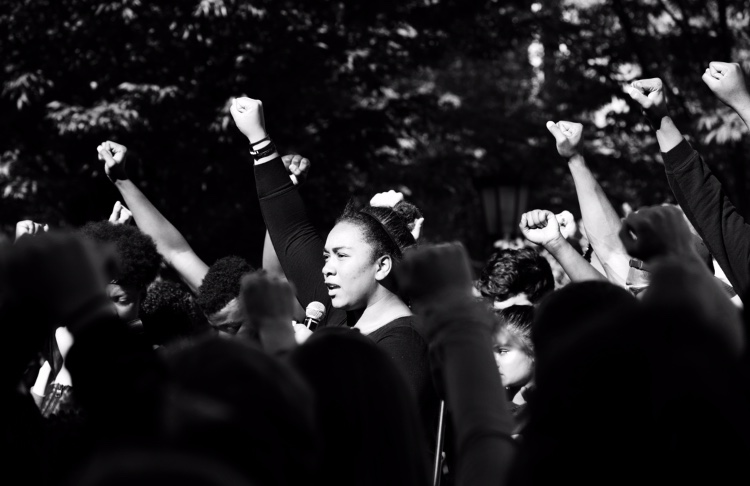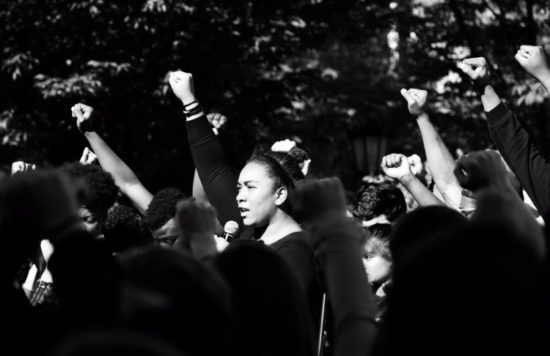
By Brenna Sinding
Editors Note: Brenna Sinding is a photojournalism student at PC, who recently traveled to the East Coast to visit a friend.

I arrived at Boston College to meet a friend, then catch a train, intending to spend an hour at most on campus. When I was informed that there was a protest happening on campus that same morning, I had to see for myself. The moment I approached the crowd, it became clear that there was a serious issue.
Various acts of racism had occurred at Boston College in mid-October. “Black Lives Matter” signs were found defaced with the word “don’t” written in front of the word “Matter.” Similar signs on students dorm
doors were torn down and ripped apart, and racial social media posts circulated around campus. Many felt angered, not only by these prejudiced acts, but by the silence of school administrators.
On Wednesday, Oct. 18, students, faculty, and staff staged a peaceful 20-minute walkout during class.
Hundreds participated to show their resistance toward racist acts committed at their school. The following Friday, a large crowd dressed in all black marched across campus, chanting in protest.
Early that same morning, posters encouraging white supremacy were found in the same location where the protest was scheduled to take place.
Eventually, Boston College did respond, stating: “Boston College condemns all acts of hate and is committed to hold- ing any student who violates our standards accountable.”
Administration commented, “We call upon all members of the BC community to treat each other with respect and to stand united against intolerance in any form.”
Hundreds of students were united, and passionate in their view that the campus needed a change. After speaking to my
friend who participated in the walk-out, I understood that students felt they could not attend class until their voices were heard. The silence was broken to acknowledge that what they feel matters; Boston College needs to unconditionally treat all students equally.
It was a truly inspiring experience to witness the support students had for each other. Silence enables racist behavior. People need to hear the voices of all students in order to create a more culturally inclusive environment.
